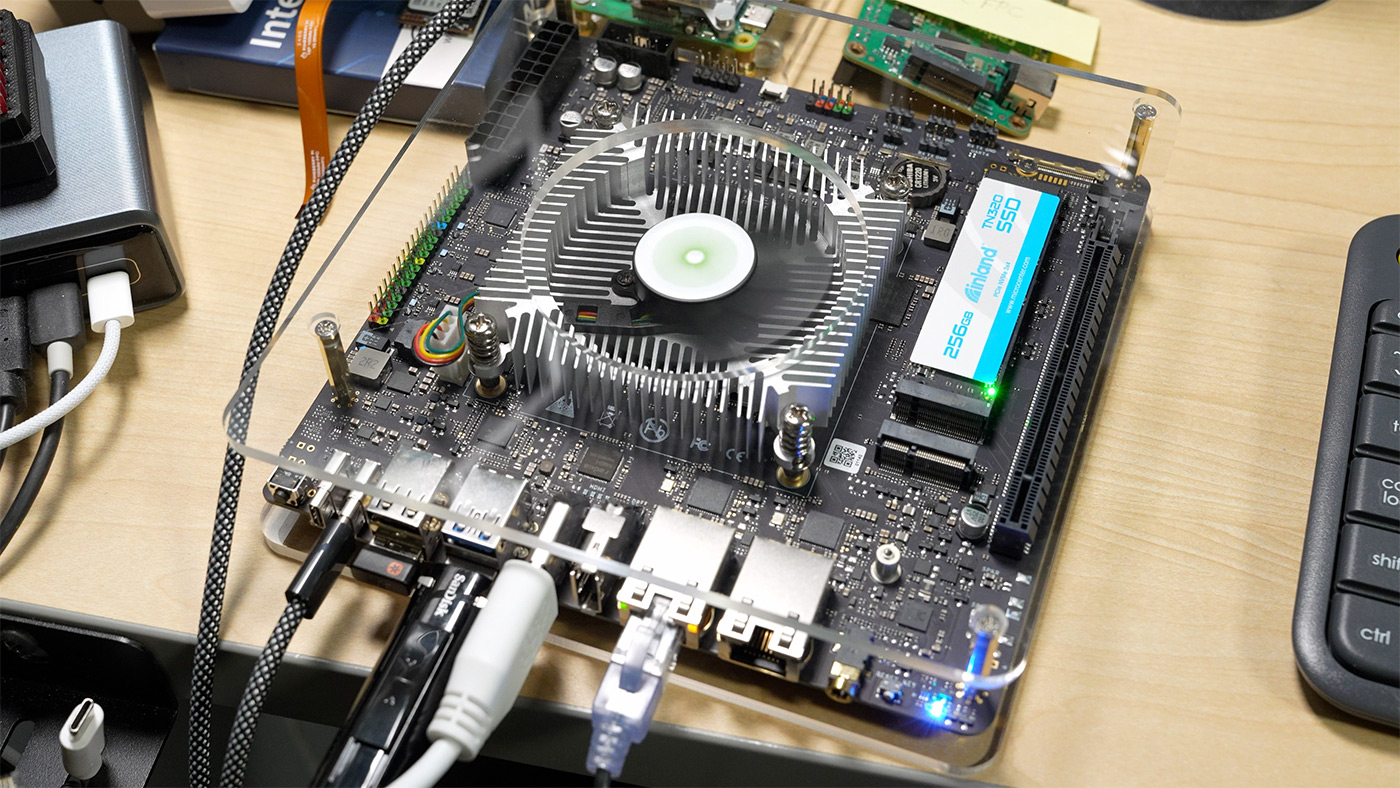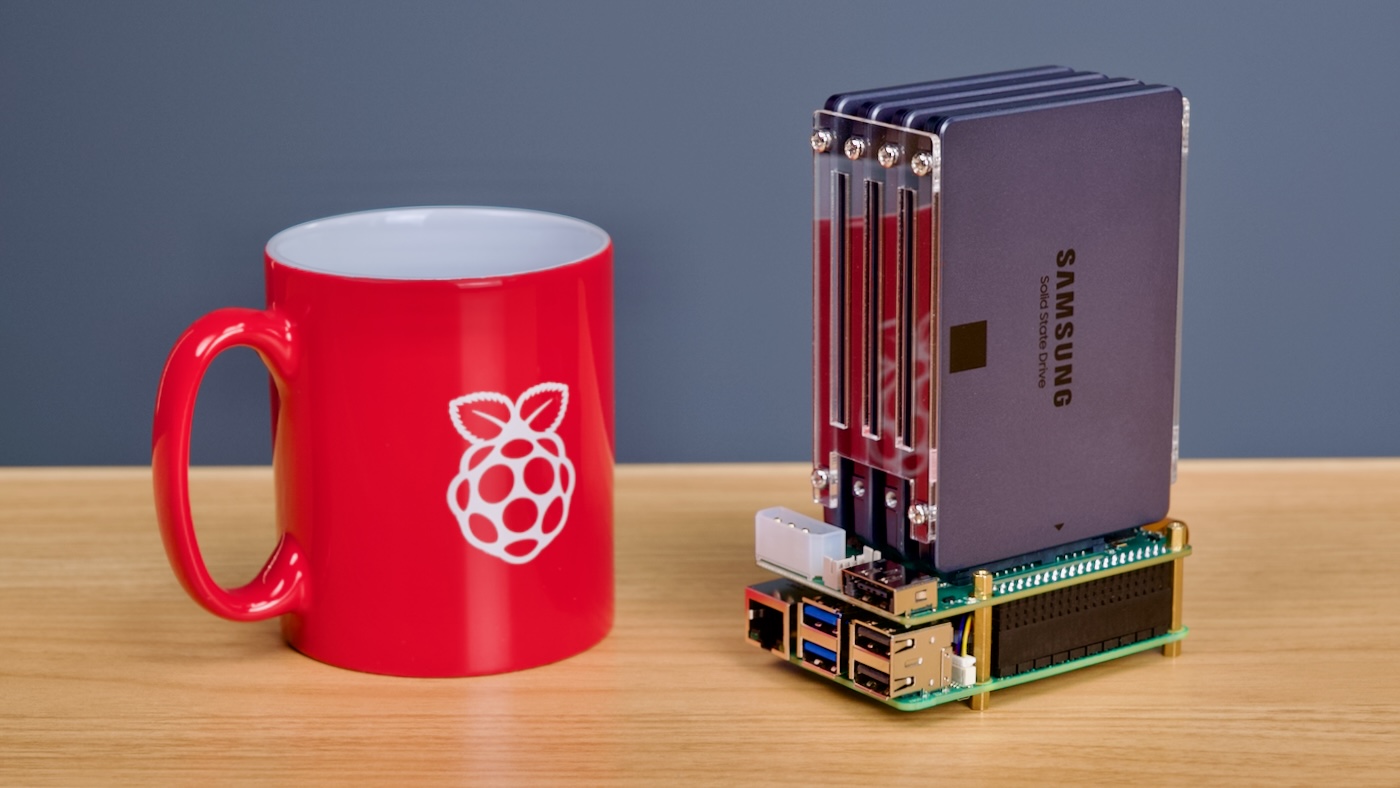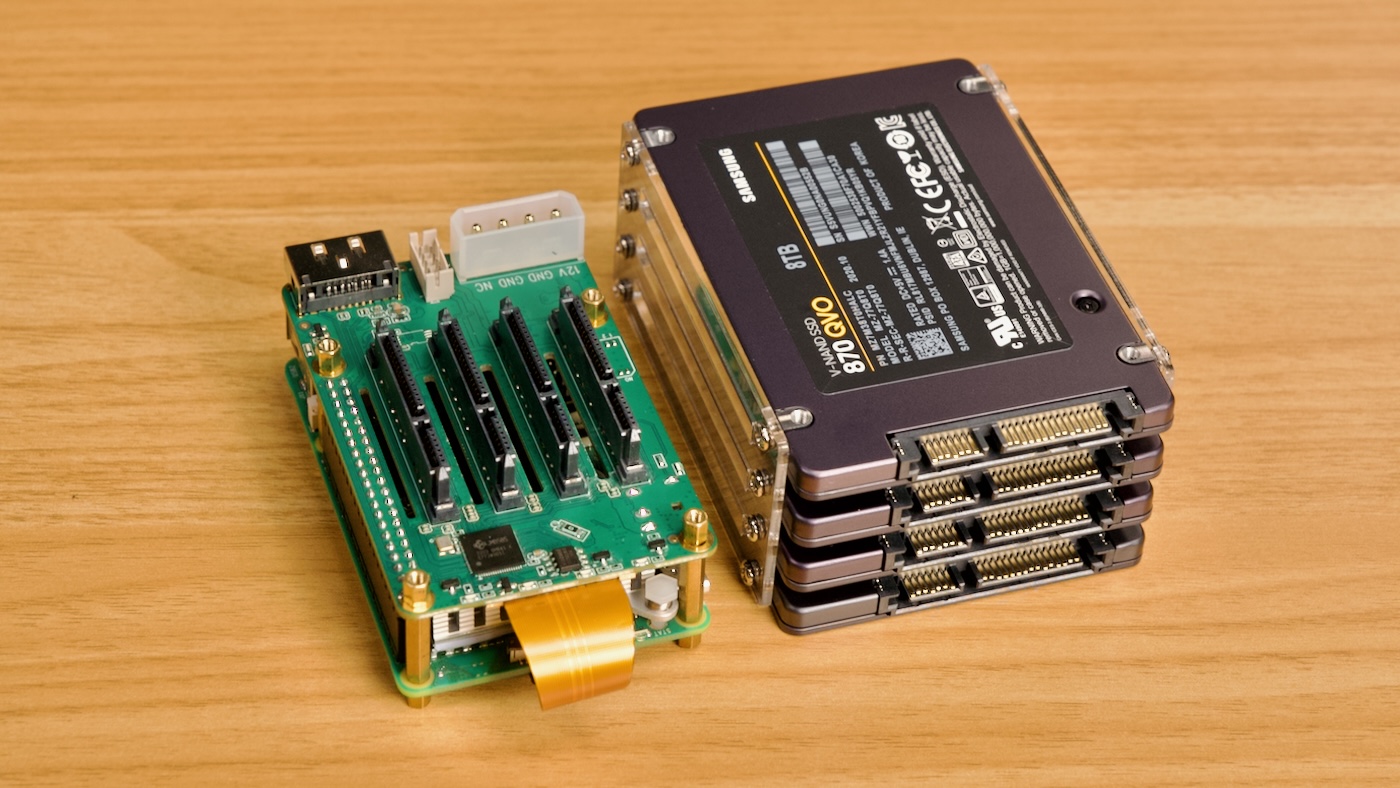Orion O6 ITX Arm V9 board - temper your expectations

When I first heard about Radxa's Orion O6, it was being compared to Apple's M1 silicon, and the product page has extraordinary claims:

When I first heard about Radxa's Orion O6, it was being compared to Apple's M1 silicon, and the product page has extraordinary claims:
At first glance, especially from the top, the Radxa X4 is your typical Arm SBC:

But you'll quickly notice the lack of an SoC—that's on the bottom. Looking more closely, what's a Raspberry Pi chip doing on top?! First, let's flip over the board to investigate. There's the SoC: definitely not Arm inside, this thing's an Intel N100:

I have all my benchmarks and notes bringing up this board stored in my sbc-reviews GitHub repository: Radxa X4 - geerlingguy's sbc-reviews, and I also summarized everything in a video on YouTube, which you can watch inline (or skip past and read this blog post instead):
Radxa's latest iteration of its Penta SATA HAT has been retooled to work with the Raspberry Pi 5.

The Pi 5 includes a PCIe connector, which allows the SATA hat to interface directly via a JMB585 SATA to PCIe bridge, rather than relying on the older Dual/Quad SATA HAT's SATA-to-USB-to-PCIe setup.
Does the direct PCIe connection help? Yes.
Is the Pi 5 noticeably faster than the Pi 4 for NAS applications? Yes.

Is the Pi 5 + Penta SATA HAT the ultimate low-power NAS solution? Maybe.
As promised in my video comparing SilverTip Lab's DIY Pocket NAS (express your interest here) to the ASUSTOR Flashstor 12 Pro, this blog post outlines how I built a 6-drive M.2 NAS with the Rock 5 model B.
The Rockchip RK3588 SoC on the Rock 5 packs an 8-core CPU (4x A76, 4x A55, in a 'big.LITTLE' configuration). This SoC powers a PCIe Gen 3 x4 M.2 slot on the back, which is used in this tiny 6-drive design to make a compact, but fast, all-flash NAS:


Radxa's Rock 5 model B is an ARM single board computer that's 3x faster than a Raspberry Pi. And that's just the 8-core CPU—with PCI Express Gen 3 x4 (the Pi has Gen 2 x1), storage is 7x faster! I got over 3 GB/sec with a KIOXIA XG6 NVMe SSD.
It's still half as slow as modern ARM desktops like Apple's M1 mini, or Microsoft's Dev Kit 2023 (see my review here). But it's way faster than a Pi, it comes with 2.5 Gig Ethernet, it has two M.2 slots on board... and, well—it also starts at $150!
Earlier this year, I pitted the $549 ASUSTOR Lockerstor 4 NAS against a homebrew $350 Raspberry Pi CM4 NAS, and came to the (rather obvious) conclusion that the Lockerstor was better in almost every regard.

Well, ASUSTOR introduced a new lower-cost NAS, the $329 Drivestor 4 Pro (model AS3304T—pictured above), and sent me one to review against the Raspberry Pi, since it make for a better matchup—both have 4-core ARM CPUs and a more limited PCI Express Gen 2 bus at their heart.
Around the same time, Radxa also sent me their new Taco—a less-than-$100 Raspberry Pi Compute Module 4 carrier board with 5x SATA ports, 1 Gbps and 2.5 Gbps Ethernet, an M.2 NVMe slot, and an M.2 A+E key slot. (The Taco will soon be available as part of a kit with a CM4 and case for around $200.)
The specs evenly matched, at least on paper:
Since the Raspberry Pi was introduced, hundreds of clones have adopted the Pi's form factor (from the diminutive Zero to the 'full size' model B). Often they have better hardware specs, and yet they remain a more obscure also-ran in that generation of Single Board Computer (SBC).

So when I saw Radxa's CM3 and Pine64's SOQuartz, I wanted to see if either would be—as they advertised—'drop in, pin-compatible replacements' for the Raspberry Pi Compute Module 4.
tl;dr: They're not. At least not yet.
Both boards are technically pin-compatible. And both will boot and run (to some extent) on pre-existing Compute Module 4 carrier boards, including Raspberry Pi's official IO Board:
When I heard about Radxa's Taco—a Raspberry Pi Compute Module 4-powered NAS/router-in-a-box—I knew what must be done.
Load it up with as much SSD storage as I can afford, and see what it can do.

And after installing five Samsung 870 QVO 8TB SSDs and one Sabrent Rocket Q NVMe SSD—loading up every drive slot on the Taco to the tune of 48TB raw storage—I found out it can actually do a lot! Just... not very fast. At least not compared to a modern desktop.
Special thanks to Lambda for sponsoring this project—I was originally going to put a bunch of the cheapest SSDs I had on hand on the Taco and call it a day, but with Lambda's help I was able to buy the 8TB SSDs to make this the most overpowered Pi storage project ever!